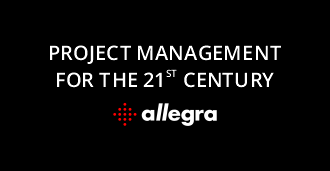Project Management Best Practices: 10 Methods for Success
Overview
The following ten project management best practices will help you act confidently and effectively as an ambitious project manager. With them, you’ll stay focused on success at every stage of the project and help motivate your team.
1. Work SMART
To complete a project successfully, the so-called SMART criteria will help you. SMART is an acronym for the following terms:
- Specific
- Measurable
- Accepted
- Realistic
- Time Bound
Although every project is unique, there are general rules for project management. If you take these into account, then you’ll have an essential cornerstone for successful project management.
2. Communicate Early
We consider everyone who is directly or indirectly interested or involved in a project a stakeholder. Stakeholders have a high demand for information. One of the most important project management best practices is providing timely, comprehensive, and up-to-date information to stakeholders from the very beginning.
Stakeholders are internal and external. It’s safe to assume that all stakeholders are concerned with the project up to and including completion. Regardless of where stakeholders are, each of them must receive the same information at the same time. No one should feel disadvantaged or played off against others. With a web-based project management system, you can easily notify everyone at the same time.
3. Project Sponsors: Keep Them Informed
Project sponsors are people who provide your team resources to complete a project. Typically, project sponsors to want to be just as informed as possible, even if they aren’t particularly hands on.
Even though keeping someone in the loop is extra work, it’s very important to remember that your project may have been very difficult or even impossible without your sponsor.
Just like patrons, sponsors want to be cared for. If the relationship between project management and sponsor works, then friction is eliminated right from the start. When management teams have a good relationship with their sponsor(s), then they have someone who will help support them.
4. Risk Assessment: Keep the Worst Case in Mind
It’s beneficial for project managers to imagine a different project course than the one that is currently successful. During a longer projects, a lot can happen, so we need to think about things that will possibly go wrong. Risk assessment needs to be constantly thought about while monitoring a project.
For clients, there are very few valid excuses to accept failure. Think about the insurance sector: the only good excuses there are war and natural disasters!
We need to address problems proactively, not reactively, in order to save everyone time, money, and stress.
5. Work Plan: More than a List of Activities
A concrete work plan details the guidelines and provides a fixed framework for managing a project. With one, you can prioritize goals step by step , define and identify intermediate results, and you’ll nip any scope creep in the bud.
We should neither do less nor do more work than what our plan defines. Figuratively speaking, the work plan participates in project communication. It tells us exactly what we need to do and needs to remain an involved “participant” in our discussions.
An absolute no-go is any extension at the request of the stakeholders. Only those who have drawn up the work plan can and may change it. We have to shoot down any disruptions from outside the project team. This is done politely, of course, but firmly, especially toward the sponsors.
6.Kick off Meetings
Kick off is synonymous with start or restart. A kick off meeting motivates the project team in every respect. Everyone is together in the meeting, so we address and inform all participants in the same way.
Clear communication is crucial, especially in a kick off meeting. Here, the management team distributes initial responsibilities and tasks. Additionally, management must inform the team about the project goal as well as the individual steps needed to achieve it. Everyone present must be made to feel that they belong to the project team and have a fixed, responsible place in it.
7. Written Documentation
Especially in agile project management, we often see written project documentation as secondary. However, writing down plans, meeting results, interfaces, etc. is one of the most important project management best practices.
Project documentation is an essential foundation for the ultimate success of a project. Nobody can keep every tiny detail in mind. We also have to remember that in our current, globalized business world, not everyone speaks the same mother tongue. Thus, when we speak, sometimes our words are pronounced, interpreted, or understood differently. Language is very flexible, and we need to make sure that everyone is on the same page. What we put down in writing is fixed and can be read at any time, which helps us avoid any confusion.
What’s decisive in a project is the scope and thoroughness of our documents. On the one hand, documentation can lend itself to “project bureaucracy”, which we should not exaggerate. On the other hand, documentation is indispensable. We can only verify statements and change and supplement work plans, budget plans, etc. when we have something to refer to. Also, in order to work through errors that we have made, it must be possible to retrace our processes.
8. Intermediate Controls
At its best, project communication should include regular reporting at one- or two-week intervals and a brief daily meeting with the project team. This is also known as intermediate controlling. Regular check ins ensure security on all sides. Project management software offers transparency here, so that everyone can see where the project stands and whether the schedule is still correct.
Project management needs intermediate controls as a basis for working and decision-making for the next step in a project. Until the project goal is reached, individual sections need to build on each other seamlessly. A missing work step brings the entire project into disarray, so consistent check-ins are necessary to make sure that we don’t overlook anything.
9. Feedback
Regular, constructive feedback is a project management best practice. Feedback also guarantees that we don’t miss a step in a project.
Communication must never be one-sided. Rather, it must go in both directions. When we give instructions, we have to ensure that they have been understood and that they will be executed. Nobody is perfect, neither the project management nor the project team. Precise, well-organized feedback ensures the smooth completion of a project.
In addition, feedback increases mutual acceptance. Each team member feels taken seriously when his or her suggestions and proposals are not only heard, but also receive feedback. Web-based project management software, like Allegra, facilitates communication because everyone is kept in the loop in the same place.
10. Project Review and Follow Up
The last of the ten project management best practices concerns the review and follow up of a project. Every project is divided into three phases: preparation, execution, and follow up. Every phase is vital for the overall project. Follow ups are only completed after a detailed project review.
This can be done in a variety of ways. In individual cases, it may be helpful or even necessary to carry out extensive follow-up work. The goal here is being able to draw on the experience of the project while working on future projects of a similar nature. Comparable to the kick off meeting, there should be a final meeting to close everything up.
Unfortunately, this often falls by the wayside for a number of reasons. Perhaps the project team members have scattered away or the project budget has been used up. To prevent any issues, the final meeting should take place as close as possible to the end of the project. As we know, after the project is finished, there is always the next project to do.
More Information
If you’d like to learn more about project management, feel free to check out our articles on making a project handbook and the 7 project management methods you should know.




